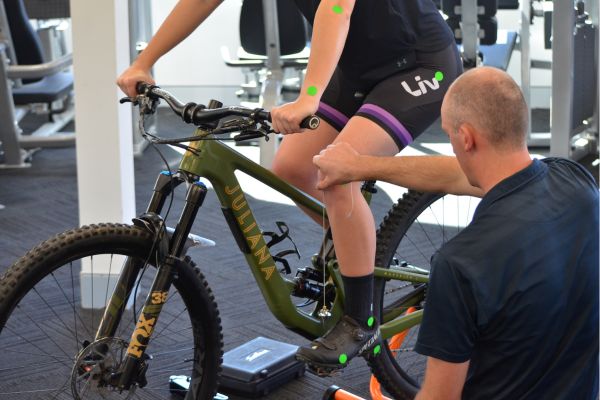Bike Fitting Explained: Do You Need a Bike Fit?
So you’ve heard of bike fitting but wondered to yourself, do you need a bike fit? Bike fits have become far more common in the general population. When I started doing them in 2011, the average cyclist really only wanted one if they had severe pain issues on their bike. These days, I get cyclists that come in with a new bike that they’ve barely ridden purely for optimisation of cycling position and prevention. The calibre of cyclists can be anywhere from just a dawdle around the lake to full-time professional cyclist.
I have had the pleasure of fitting bikes to Canberrans for over 12 years, and in that time, I’ve worked with beginners to professional cyclists in all forms of the sport. I even wrote an article for flow magazine about bike fitting and my work with Dylan Cooper.
So, do you need a bike fit, and how will it help you?
Our philosophy in the clinic is to fit you to the bike as much as the bike to you. In the clinic, we run through a full musculoskeletal screening prior to checking you on the bike. It may be your body that needs some work too.
However, let’s look at different bike set-up positions and how they relate to what you may feel in your body. I’m mostly referring to road bike setup, but the same concepts apply to time trial bikes, mountain bikes and everything in between.
Here is what you may feel if your position is not quite right.
Cleats
Too far forwards
- Pressure uncomfortably through your toes.
- Poor calf muscle activation.
Too far back
- Also poor calf muscle recruitment.
- Increased quadricep loading (tired thighs).
Cleat angle (rotation) wrong
- Knee pain around your knee cap or joint line where the menisci lie.
- Knees wanting to pedal up and down on the wrong angle – i.e. towards the top tube or out to the side.
Saddle position
Too high
- Side to side rocking in your pelvis (can cause saddle sore or low back pain).
- Low back pain from over extending your leg.
- Back of knee pain.
- Calf cramping from pedalling with pointed toes.
Too low
- Knee pain around your patella (knee cap).
- Fatigue from a less mechanically advantageous pedalling position.
Slid too far back
- Pain around your patella from recruiting your quadriceps too early across the top of the pedal stroke.
- Low back or neck pain from being too stretched out away from the handlebars.
Too far forwards
- Knee pain from lack of glute and hamstring recruitment and increased compression of your patello-femoral joint (knee cap joint that slides up and down on the femur).
Tilted forwards
- Pressure in your hands – can cause neck pain from extra strain on your shoulders or wrist pain.
- Knee pain from extra quadriceps loading.
- Effort to stay in the correct spot on the saddle as you keep sliding forwards.
Tilted backwards
- Low back pain due to having to flex your lumbar spine more.
- Saddle area contact pain or numbness.
Handlebar position
Low
- Low back pain due to having to bend your back longer then it is happy with.
- Neck or shoulder pain from having to look up more than is tolerable.
- Buttock or hamstring pain from pedalling in a position that puts them on more stretch than they can tolerate.
- When very, very low, power output can drop off.
High
- Sometimes also results in low back pain from having the handlebars too close causing extra bend through your back.
- Slower due to poor aerodynamics.
Reach too far away
- Neck pain from rolling the shoulders forward to gain extra length out of your arms.
- Pedalling with locked out elbows which is uncomfortable for your neck but also contributes to neck pain.
Too close
- Back pain from shifting your centre of mass backwards and flexing your spine.
Handlebars
This will obviously differ the most between bikes. Drop bars on a road bike versus flat bars on a mountain bike or hybrid. Then there are the gravel bikes that have had an identity crisis. They are similar to mountain bike width but with road bike style drop. Either way, we are looking for the most comfortable and functional wrist position. The best way of looking at this is to imagine you are punching your handlebars. If your wrist is in any position other than a nice strong punching position, you may need to make some changes. This may include rotating the handlebar forwards or backwards slightly, adjusting brake position or shifter position, and even the type of grip.
So what is the best position you ask for all these different adjustments? Well, unfortunately, that depends on the person. For example, a flexible female with short arms and legs will be set up quite differently to a long-legged, low flexibility male. Hence the need for the full body screening that we start all our bike fits with.
Hopefully, you’ll be able to make some mild adjustments and get closer to the “best position” for your body and bike. Even if you do require a bike fit after having a play with the position, at least you’ll come in with some extra information such as “I tried this but my back felt worse” or “When I use these shoes, my knee hurts more”.
If you identify with any of the above instances, it may help you to answer the question: do you need a bike fit?
If you want more information about our bike fitting process, click here or call 62624464 and ask to speak to myself.
Some references for bedtime reading:
https://www.researchgate.net/publication/50936611_The_Effect_of_Saddle_Position_on_Maximal_Power_Output_and_Moment_Generating_Capacity_of_Lower_Limb_Muscles_During_Isokinetic_Cycling
https://journals.sagepub.com/doi/10.1177/00368504211041495
https://www.ncbi.nlm.nih.gov/pmc/articles/PMC5717478/
https://www.researchgate.net/publication/255897811_Lower_back_pain_in_cyclists_A_review_of_epidemiology_pathomechanics_and_risk_factors






